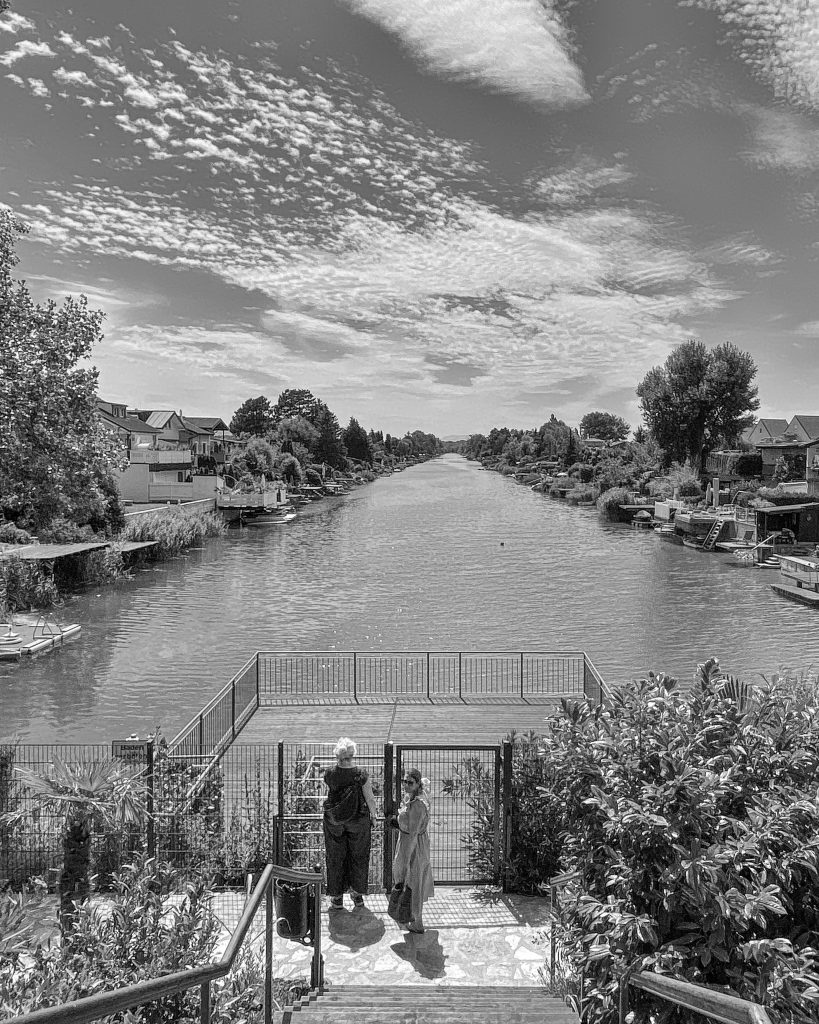Danube–Oder Canal

The Danube-Oder Canal on the outskirts of Vienna near the Lobau is an ultimately failed project for the construction of a waterway to connect the Danube with the Oder. Of the 40km long canal originally planned in Austria, only the initial sections – starting from the Vienna tank farm – with a length of about 2.3km were realized in the 1930s and today serve as fishing grounds and bathing lakes for the local residents.
Ideas to build continuous European waterways for the transport of goods emerged as early as the late Middle Ages, and the first concrete plans were made in the 18th and 19th centuries with the advent of industrialization. At the beginning of the 20th century, a decision was made to plan and build the waterway, which was ready for construction from 1910, but was stopped by World War II. Under the Nazis, the construction of a 90m wide harbor basin and 4 canal sections (DOK I-IV) actually began from 1939, most of which are now in Lower Austria.
In the late 20th century, renewed thoughts about further construction were finally discarded for ecological reasons. The evaporation of the surface water leads to a lowering of the groundwater level and for the complete realization massive negative effects on existing nature reserves would have to be feared.